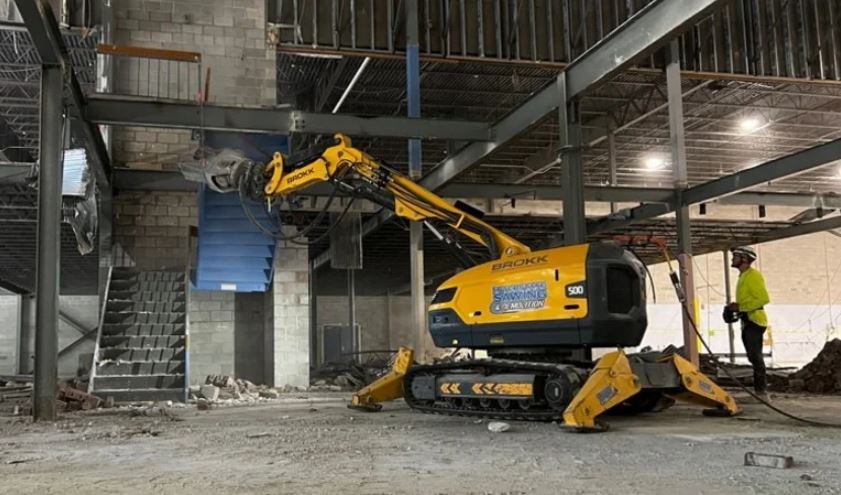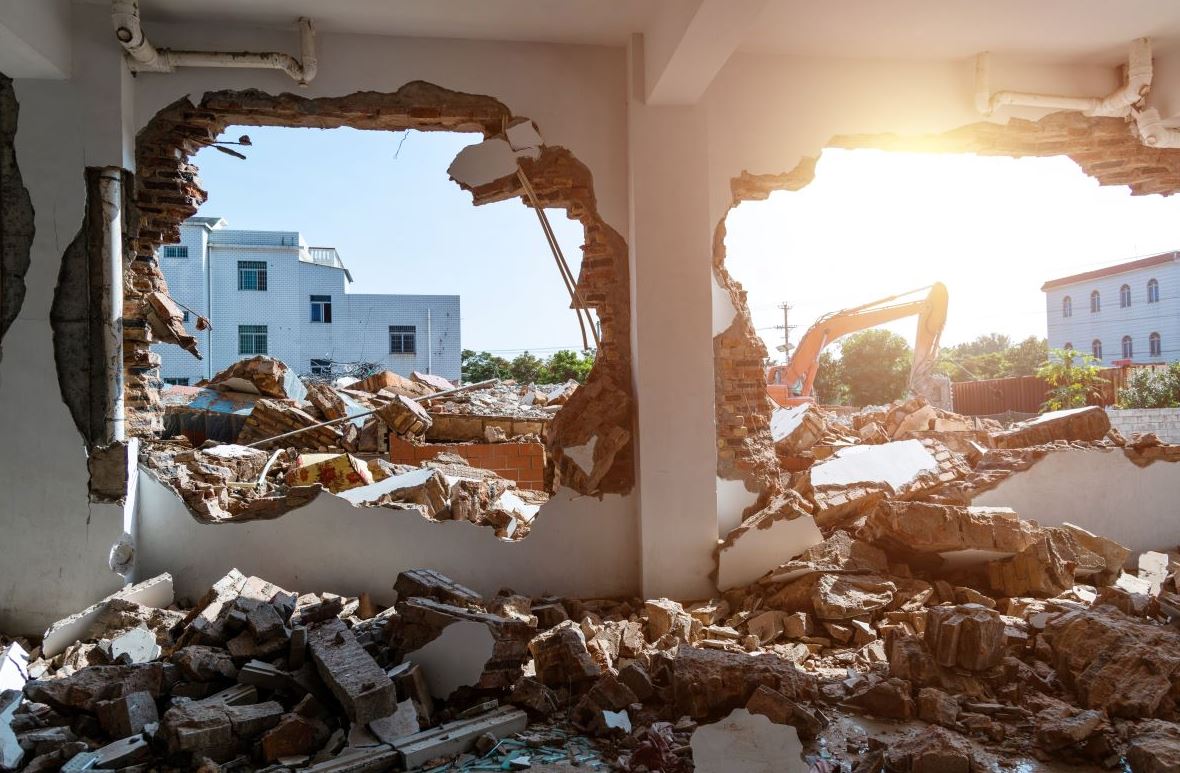Choosing the Right Demolition Method: Exploring Implosion, Wrecking Ball, and Mechanical Demolition
In the ever-evolving landscape of urban development and infrastructure renewal, demolition is a crucial preliminary step, paving the way for new constructions and revitalizations. It’s a process that removes outdated or unsafe structures and facilitates urban regeneration and the efficient use of space in densely populated areas. This blog post delves into the intricate world of demolition, focusing on three primary methods: implosion, wrecking ball, and mechanical demolition. Each technique has unique advantages and challenges, and the choice among them depends on various factors, from the structure’s location and size to environmental concerns and budget constraints.
Understanding Demolition Methods
Implosion
Implosion is a dramatic demolition method that involves using explosives to collapse a building inwardly. This method is highly efficient for demolishing large structures in urban environments where space is limited. The basic principle behind implosion is strategically placing explosives in key structural supports so the building falls within its footprint, minimising damage to surrounding areas. Preparing a building for implosion requires meticulous planning, including a thorough structural analysis, removal of non-structural elements, and precise placement of explosives.
Advantages of implosion include its speed and the ability to quickly clear a site for new construction. However, this method demands extensive planning and expertise to mitigate the risks associated with flying debris, vibration, and the potential impact on nearby structures and communities.
Wrecking Ball
The wrecking ball method, one of the oldest demolition techniques, involves swinging a large, heavy ball from a crane to physically break apart a structure. It’s a method steeped in history, once the go-to choice for demolishing buildings. The simplicity of this method and its lack of need for explosives are among its primary advantages. It can be particularly effective for smaller, less complex structures.
However, the wrecking ball method has several disadvantages, including challenges in controlling the ball with precision, significant noise, and safety concerns for both workers and bystanders. Additionally, its efficacy diminishes with the increasing strength and complexity of modern building materials and designs.
Mechanical Demolition
Mechanical demolition involves using heavy machinery, such as excavators and bulldozers, to dismantle buildings piece by piece. This method is characterised by its precision and versatility, allowing for the careful deconstruction of structures to facilitate the recycling of materials. The process includes the strategic removal of materials, starting from the top of the building and working downward, while ensuring the stability of the structure during demolition.
The advantages of mechanical demolition include the ability to salvage and recycle materials, which supports sustainability efforts. It’s also adaptable to various types of structures and sizes. However, this method can be time-consuming and labour-intensive, especially for large buildings. Additionally, mechanical demolition generates significant dust and debris, raising environmental and health concerns.
Choosing the Right Method
Selecting the appropriate demolition method involves carefully considering several factors, including the size and type of the building, its location and proximity to other structures, environmental regulations, time constraints, and budget. For instance, implosion might be the preferred method for quickly demolishing a large skyscraper in an urban area. In contrast, mechanical demolition could be more suitable for a project that requires material recycling and has fewer time constraints.
Each method has its place in the arsenal of demolition techniques, often depending on specific project requirements and goals. For example, in scenarios where minimising environmental impact is a priority, mechanical demolition with its emphasis on recycling might be the best option. Conversely, implosion could be the most effective approach in situations where speed is of the essence and the site is appropriately isolated.
Factors Influencing the Choice of Demolition Method
Many factors influence the decision on which demolition method to employ, each playing a crucial role in determining the most appropriate and efficient approach for a given project.
- Size and Type of Structure: Larger buildings may require more powerful methods like implosion for efficient removal, whereas smaller structures might be better suited to mechanical demolition or the wrecking ball.
- Location and Proximity to Other Buildings: Dense urban environments with close neighbouring structures might necessitate the precision of implosion or mechanical demolition to avoid damaging surrounding properties.
- Environmental Considerations and Regulations: Projects in areas with strict environmental regulations may benefit from mechanical demolition, which allows for greater control over dust and debris.
- Time Constraints and Project Timeline: When time is of the essence, implosion can clear a site much faster than other methods, making it ideal for tight schedules.
- Budget and Cost Implications: The cost-effectiveness of each method varies, with mechanical demolition often allowing for material recycling and cost recovery, whereas implosion, despite its higher initial cost, offers speed and efficiency that may outweigh overall expenses.

Comparative Analysis
The choice of demolition method can be better understood through scenario-based recommendations, case studies, and expert opinions.
- Scenario-based Recommendations: For instance, implosion could be chosen in densely populated urban areas for its ability to quickly demolish skyscrapers with minimal horizontal impact. In contrast, a historical building surrounded by protected structures might be best dismantled piece by piece through mechanical demolition.
- Case Studies: Examples include the controlled implosion of the old Dallas Cowboys Stadium, showcasing the method’s precision and efficiency in a highly controlled environment, or the mechanical dismantling of the Pruitt-Igoe complex, emphasising material salvage and recycling.
- Expert Opinions and Industry Standards: Professionals often advocate for a thorough site and structural analysis to choose the most suitable method, emphasising the importance of safety, environmental impact, and community considerations in the decision-making process.
Future Trends in Demolition
The field of demolition is rapidly evolving, with new technologies and methods that promise to revolutionise how structures are dismantled.
- Emerging Technologies and Methods: Robotic demolition is on the rise, offering safer, more precise, and less labour-intensive alternatives to traditional methods. High-reach excavators are becoming more common for tall structures, providing a safer way to reach and dismantle buildings from the top down.
- Sustainability in Demolition: The industry is moving towards more sustainable practices, such as recycling materials from demolition sites and reducing the environmental impact through more efficient methods and technologies.
- The Role of Digital Planning Tools: 3D modelling and simulation software are increasingly used to plan and visualise demolition projects in advance, allowing for safer and more efficient outcomes by predicting potential issues and optimising the demolition process.
Choosing the right demolition method is a multifaceted decision that plays a pivotal role in the success of urban redevelopment projects. It requires carefully considering the structure’s characteristics, surroundings, environmental impacts, time and budget constraints, and the latest industry trends and technologies. As the field continues to evolve, staying informed about emerging methods and technologies will be crucial for professionals in making decisions that are efficient, cost-effective, environmentally responsible, and safe for communities.
The evolution of demolition techniques reflects broader construction and urban development trends, emphasising sustainability, safety, and efficiency. By considering multiple factors and seeking expert advice, stakeholders can ensure that their demolition projects contribute positively to the urban landscape’s renewal and development. The future of urban redevelopment will likely see even greater integration of advanced technologies and sustainable practices, marking an exciting time for the industry and offering new opportunities for innovation and improvement.
